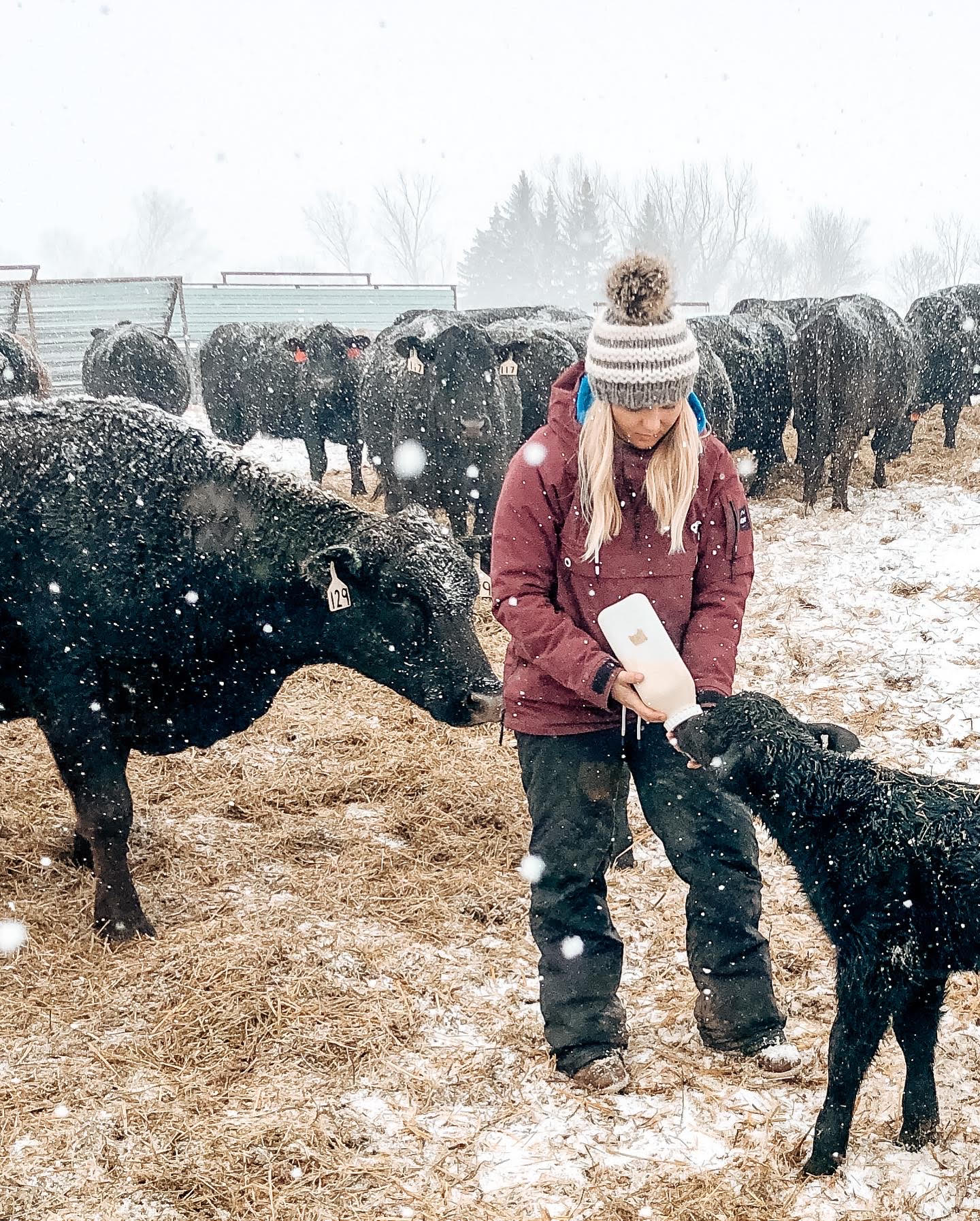

Spring blizzards hit different. Calving in late spring usually avoids harsh weather and thus means many later spring calving herds aren’t setup to weather these types of storms the same way winter herds are.
Thankfully, we had ample time to prepare thanks to accurate forecasts. Once it hit, we entered disaster management mode:
We fed many bottles to babies that looked cold & hungry.
We cycled many babies through the warmer.
We had babies so cold we gave them a hot water bath to save them.

We penned cows with their babies to pair up.
We fed many bales.
We spread many bales for bedding.
We tagged many new babies & tried to sort out mystery calves.
There was never an end. We never caught up. There was always more.
What does a storm cost?
First, you should know that while we battled the storm we weren’t thinking about cost.
We focused on doing what’s right and that’s caring for our animals with the best that we’ve got.

Ok, cost.
Time.
It took time to setup and prep. It takes time to triage. It takes time to feed all these babies in the calf ICU. It takes time to bed more frequently. Everything takes longer in the difficult weather.
Opportunity cost.
With time spent on keeping animals alive, we’ve been pulled off other projects that could be generating revenue or setting us up for success later this season.
Fuel.
All the equipment running, all the time. The rangers, the loader, the bale buster, the heaters.
Wear & tear.
The mud mixed with snow is especially hard on rangers. Renegade cows don’t help either. They may or may not have played a role in a busted ranger door + window…
Bales.
Extra feed. Extra bedding. Bales on bales on bales. They cost money regardless but coming off the drought of last year they are even more valuable.
Colostrum.
When in doubt, we give colostrum to give a calf a solid foundation to lifelong health. It’s an extra cost that otherwise wouldn’t have occurred.
Milk replacer.
Every calf struggling is getting a bottle. The barn is full of calves that weren’t thriving with their mothers, so we pulled them to keep them alive. Now we are feeding them milk replacer plus still feeding their mom who is now not doing her job.
Meds.
The struggling calves are also getting treatment. Meds that they wouldn’t need if they were healthy.
Feed efficiency.
Cattle on feed typically have diminished gains during times of stress like these storms. This will set them back and each day on feed costs more money.
Death loss.
Simple. Straight forward. The animals that didn’t make the storm are a loss.
Long-term health.
Cattle that did survive the storm have an uphill battle. We will continue to treat and see fallout. Our next major concern is how to keep everyone healthy. Once the snow & wind give us reprieve, we shift gears to a different type of triage.
Fencing.
This heavy wet snow will surely pull some fence down under the drifts. That’s time in fixing and supplies.
Delayed planting.
Projected first day in the field is pushed back now, but we have moisture we needed. Time will tell which factor has the most influence this season.
Fatigue.
Our crew is tired. Physically, mentally, and emotionally. The toll on our people is tough. Tough to quantify, tough recover.
Calving is hard work in good weather. It’s been exceptionally hard with the cold, snow, and wind. Once the sun shines, we still aren’t in the clear. We will be on high alert to keep animals healthy, which will be an uphill battle. Then, when we can get in the field our planting window will be shorter.
The sprint might be over. The marathon continues.